

When human beings are born, they are immediately assigned a gender based on external genitalia. It’s a simple process. If a penis is present, he is male. If there is a visible labia and clitoris, she is a female. If gender is questioned later because of ambiguous anatomy, for example, blood can be collected to determine what the chromosomes say.
From the moment of assignment, the boy or girl’s fate is sealed by societal norms. Girls will wear “girly” clothes, play with dolls, struggle with math and science, and someday, marry a boy. Boys will wear “boy” clothes, be good in math and science, and someday, marry a girl.
Imagine looking in the mirror and recognizing from your very core that they got it wrong. You are absolutely in the wrong body. If you dress, speak, or behave like the person you know you really are, you will be stigmatized.
If you are an adult or adolescent in the wrong body, or your child is in pain because he or she insists they are in the wrong body, there are some things you should know.
Gender Dysphoria (previously called Gender Identity Disorder) is the psychological and emotional distress that comes from conflicting gender assignment and gender identity. The simplest definition of dysphoria is “a state of unease or general dissatisfaction with life”. Anyone can experience dysphoria for a wide variety of reasons, and not everyone who questions their assigned gender struggles with dysphoria.
In 2013 the American Psychiatric Association made a meaningful change to the Diagnostic and Statistical Manual (DSM), changing the term “Gender Identity Disorder” to “Gender Dysphoria”.
In 2019 the World Health Organization (WHO) removed “Gender Identity Disorder” from the list of mental illnesses and changed it to “Gender Incongruence”.
The word disorder can be stigmatizing, unfortunately, and may feed the belief that something is inherently wrong with a person, but it’s important to understand that Gender Dysphoria (GD) is not a mental illness in itself.
That’s not to say that people with GD don’t experience mental health difficulties as a result of GD, but reclassifying what was previously considered a “disorder” is a great stride towards compassion and acceptance of a huge population of people who were previously condemned simply for being who they were.
Gender identity refers to one’s own sense of their gender, while gender expression refers to the way an individual presents themselves to the world.
Transgenders are individuals who do not identify with their gender assignment because it is completely different from their sense of self. They often choose to express themselves in the world as the gender they know they really are. For example, wearing make-up is considered a feminine gender expression, and having a beard is considered a masculine gender expression.
Not everyone who struggles with gender dysphoria identifies as transgender, but a great number of people diagnosed with gender dysphoria do identify as transgender, gender fluid, or gender non-conforming.
In 2017 0.5% – 1.3% of children, adolescents, and adults self-reported being transgender. It used to be a fairly uncommon diagnosis, but the numbers have been steadily increasing for the past several decades.
Keep in mind, because of fear of stigmatization and lack of awareness and understanding, each of the following numbers are likely higher.

In 2016 there were 390 per 100,000 adults reported as transgender.
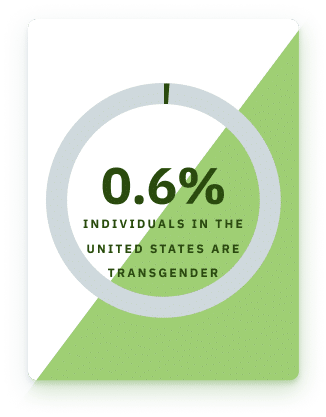
1.4 million (0.6%) individuals in the United States are transgender.
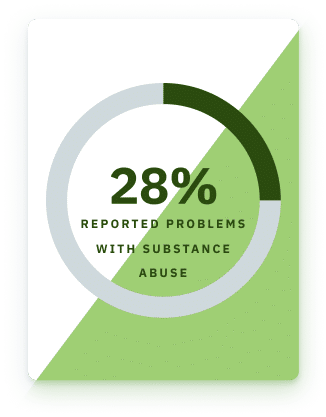
28% of individuals with GD report problems with substance abuse.
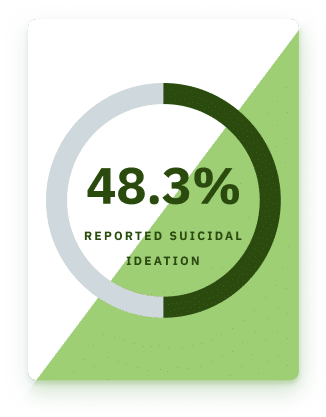
48.3% reported suicidal ideation.
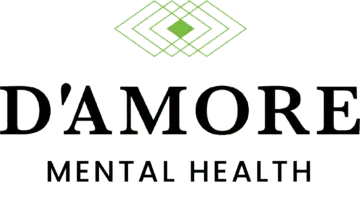
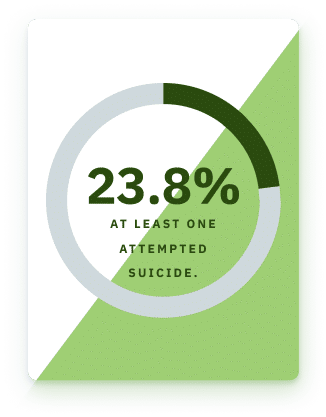
23.8% had at least one attempted suicide.
These numbers continue to rise as more people open up about being transgender. Discrimination and other challenges are still highly prevalent, therefore education and awareness are imperative in order to keep our transgender community safe, healthy, and accepted.
Some transgender individuals don’t experience any mental health challenges at all. Some have mental health issues that are completely unrelated to being transgender.
But many people who identify as transgender do face mental health challenges. And many of those challenges are a direct result of societal norms and expectations.
Transgender people may experience discrimination at school or work, or in social settings. More than half of students in grades K-12 who are public about being transgender face verbal harassment. One in 4 are physically attacked, and at least one in 10 are sexually assaulted (which explains why the reporting numbers are low).
About half of transgender adults report having been verbally harassed within the past year. Bullying, discrimination, harassment, and prejudice are still very real threats against our transgender population despite the progress that has been made as a society.
The prejudice of society, fear of being harassed or bullied, and the general feeling of being “different” can lead to:
Isolation can be incredibly dangerous. Having no one to talk to, or feeling ostracized and unwanted can lead to even more mental health challenges such as:
Remember, gender dysphoria is not the direct cause of these mental health issues – the reaction from society is. Education and compassion are key factors towards diminishing the mental health problems faced by people who are transgender or struggling with gender dysphoria.
Gender dysphoria typically includes discomfort and distress about one’s assigned gender, including:
Children commonly exhibit gender non-conforming behaviors, so it’s important to distinguish between typical childhood behavior and actual gender dysphoria. The above symptoms must be present for 6 months or more, as well as impairments in functioning or significant emotional distress.
Signs of gender dysphoria may present as early as age four, and the symptoms will likely grow more severe if they are experiencing true gender dysphoria, especially once they begin to go through the physical changes related to puberty.
The world is changing. People are broadening their minds and coming to understand that cultural “norms” are not necessarily the natural order of things. The terminology can be confusing at first, but here are some terms that may be helpful to know if you or a loved one are facing questions about gender identity and expression:
The type of individual towards whom one has emotional, physical, and/or romantic interest and attachments.
A term for individuals whose gender identity and/or expression varies from societal norms. This may include multiple genders or no gender at all.
Classified by the DSM-5 as significant distress related to the strong desire to be another gender. This may include the desire to change primary or secondary sex characteristics.
A person whose gender identity aligns with the sex they were assigned at birth.
Someone whose gender identity is neither girl/woman nor boy/man.
Whose gender identity is not aligned with the gender they were assigned at birth.
The outward expression of one’s gender, which may or may not be in alignment with their assigned gender. This includes how they carry themselves, dress, accessorize, groom, their speech patterns, mannerisms, and physical characteristics.

A person’s internal sense of being male/female, a combination of both, or something else; sometimes no gender at all. This may or may not align with the gender assigned at birth.
Treatment for GD is highly individualized depending on the person’s level of distress and desire for physical change. As with all things related to mental health, one size does not fit all. Different people face different challenges and require varying levels of care, support, education, and guidance towards changes to be made.
If you, your child, or someone you care for is experiencing GD, the first step is to seek care from a primary physician or mental health care provider. It’s a common assumption that hormonal and surgical treatments are the “cure” for GD, and in many cases that is the desired process.
However, mental health concerns take precedence, and it’s important for an individual to feel confident about their journey before moving forward. Depression, anxiety, substance abuse, and suicidal ideation need to be addressed before moving forward with drastic physical change.
Improving the quality of life is the main purpose of counseling for those who identify as transgender or struggle with gender dysmorphia. Therapists will guide the individual, as well as their loved ones towards understanding the emotional and physical aspects of gender dysphoria.
The individual will be guided in acquiring coping skills to minimize the intensity of mental health concerns resulting from their GD, such as anxiety, depression, and suicidal thoughts. There are many different modalities of therapy, but in general, this stage of treatment will include coming to comprehend the various aspects of transitioning such as:
If an individual has successfully navigated their mental health challenges associated with GD and do wish to move forward with transitioning, the next steps will likely include:
Hormone Therapy may be used to suppress the endogenous hormones and develop secondary sex characteristics different from those associated with the individual’s birth-assigned sex.
Those who were assigned female at birth may be prescribed testosterone in order to promote a more masculine appearance, and those assigned male at birth may be prescribed estrogen (as well as testosterone-blocking hormones) in order to advance towards a more female appearance.
Successful hormone therapy not only helps to facilitate positive physical changes in trans individuals but also significantly improves their emotional well-being.
Gender-Affirming Surgery may include facial feminization surgery, vocal cord surgery, chest reconstructive surgery, and genital reconstruction surgery. Hair removal and implants, as well as vocal training, may also be part of the surgical process.
Chest reconstruction is often referred to as “top surgeries’, and genital reconstruction as “bottom surgeries”.
Therapy and counseling remain an important part of the surgical process since the individual will need to continuously manage expectations, emotional ups and downs, coping and relaxation skills, financial planning, medical stability, substance use, and the recovery process as a whole. Just because something is the right thing to do doesn’t mean it’s easy – in fact, the most positive changes we make in life are often the most difficult. Make sure you, your child, or your loved one have appropriate and ongoing mental health support while going through the arduous process of transitioning.
Regardless of where you are in your journey, it’s important to always be taking care of your or your loved one’s mental health. Gender dysphoria is a condition that requires the practice of self-care and self-acceptance. Though society has come a long way towards understanding and acceptance, we still have a long way to go, so it’s important to find the necessary support and acceptance that you deserve as you navigate your way through gender dysphoria.
If you are in immediate crisis and feel like hurting yourself, please call the National Suicide Prevention Hotline at 800-273-8255. Even if you aren’t suicidal, but you feel hopeless and like you have no one to talk to, give them a call. They can point you in the right direction of the appropriate resources.
Allow yourself to feel your feelings, and know that anxiety, depression, fear, anger, and confusion are all absolutely normal for anyone, whether or not they are experiencing GD. When those feelings become unmanageable however and overwhelm your life to the point where you aren’t functioning well, or enjoying what used to be enjoyable activities, reach out for some assistance. Don’t wait. You deserve help and support, and there are resources out there to help guide you.

If someone you love is facing gender dysphoria, don’t be afraid to become involved and ask questions. If it’s confusing for you, imagine how your loved one must feel!
Listen without judgment. Ask questions, but don’t push for the answers you wish to hear. Learn the terminology and let your loved one explain things to you. They are likely feeling alone, and they don’t need a lot from you – they just need to know that you accept them, love them, and are willing and available to listen and support them in whichever direction they choose to take.
Gender dysphoria is not a mental illness, nor is transgenderism. However, both conditions are confusing, potentially isolating, and can be overwhelming. Those feelings of isolation and confusion can easily spiral into mental health issues very quickly. So be there for your loved one, or be there for yourself. Regardless of how you feel, you are not alone; there is help, and there is hope.




















